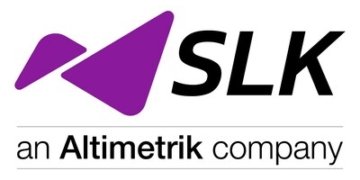According to a new report published by Allied Market Research, titled, “Collaborative Robot Market”, the collaborative robot market size was valued at $1.4 billion in 2022, and is estimated to reach $27.4 billion by 2032, growing at a CAGR of 36.3% from 2023 to 2032. A collaborative robot (cobot) is a type of robot designed to work together with humans in a collaborative and interactive manner.
Download Research Sample with Industry Insights (200+ Pages PDF Report) @ https://www.alliedmarketresearch.com/request-sample/4682
Collaborative robots are equipped with various sensors and advanced technologies to ensure safe collaboration with humans. The applications of collaborative robots span across various industries, which include manufacturing, healthcare, logistics, and agriculture. They can be used for duties such as assembly, pick-and-place operations, machine tending, quality control, packaging, and repetitive tasks that can benefit from automation while still requiring human oversight or intervention.
The emphasis on worker safety and compliance with stringent safety standards has driven the adoption of collaborative robots in various industries. Collaborative robots are engineered to prioritize worker safety. They are equipped with sensors and technologies that can detect the presence of people nearby, ensuring that they can slow down or stop their movements to prevent accidents or collisions. Force and torque sensors allow cobots to sense external forces, enabling them to quickly respond to any sudden contact with human beings and avoid causing harm.
Request For Customization @ https://www.alliedmarketresearch.com/request-for-customization/4682
Moreover, regular industrial robots often require safety barriers to protect human workers from potential hazards. Collaborative robots, on the contrary, are designed to operate without the need for extensive safety barriers. Their advanced safety features, such as built-in collision detection and force issue capabilities, allow them to operate safely in shared workspaces with humans. The emphasis on worker security and compliance with safety standards is anticipated to drive the collaborative robot market growth in the coming years.
However, some regulatory and legal considerations can pose restraints on the cobot market. Moreover, cobots need to comply with safety standards to ensure the well-being of human workers who interact with them. As cobots become more prevalent, regulators may introduce or update safety standards to address emerging concerns. Adhering to these standards can be challenging for companies, as it may require modifications to existing cobot designs or implementing additional safety measures. Furthermore, companies utilizing cobots must conduct thorough risk assessments to identify potential hazards and implement appropriate safeguards. This process can be time-consuming and resource-intensive, particularly in industries with complex work environments. Adhering to regulatory requirements for risk assessments may slow down the deployment of cobots and add extra costs for companies. All these are major factors projected to hamper the collaborative robot market revenue growth in the upcoming years.
The ongoing advancements in robotic technologies, such as artificial intelligence (AI), machine learning (ML), computer vision, and sensor technologies, are driving the improvement of more advanced and capable cobots. These technological improvements enhance the skills of cobots and enable them to perform a wider range of tasks with increased precision and efficiency. Furthermore, technologies like AI, ML, and computer vision have enabled cobots to become more intelligent and adaptable. They can learn from their environment, make autonomous decisions, and perform complex tasks with precision. The integration of advanced sensors and vision systems enables cobots to perceive their surroundings accurately. They can detect and respond to changes in the environment, ensuring safe and efficient operation. With improved precision and accuracy, cobots can perform repetitive tasks with minimal errors, reducing waste, and improving production efficiency. These factors are anticipated to have a positive impact on the collaborative robot market trends in the coming years.
Inquiry Before Buying : https://www.alliedmarketresearch.com/purchase-enquiry/4682
The collaborative robot market share is segmented on the basis of component, application, end user, payload capacity, and region. By component, it is classified into hardware and software. By application, it is classified into handling, assembling & disassembling, welding & soldering, dispensing, processing, and others. By end user, it is classified into automotive, electronics, metals & machining, plastics & polymers, furniture & equipment, healthcare, and others. By payload capacity, it is classified into up to 5kg, up to 10kg, and above 10kg. By region, the collaborative robot market is analyzed across North America, Europe, Asia-Pacific, and LAMEA.
The report offers a comprehensive analysis of the global collaborative robot market analysis by thoroughly studying different aspects of the market including major segments, market statistics, market dynamics, regional market outlook, investment opportunities, and top players working towards the growth of the market. The report also highlights the collaborative robot market demand by studying the present scenario and upcoming trends & developments that are contributing toward the growth of the market. Moreover, restraints and challenges that hold power to obstruct the market growth are also profiled in the report along with the Porter’s five forces analysis of the market to elucidate factors such as competitive landscape, bargaining power of buyers and suppliers, threats of new players, and emergence of substitutes in the collaborative robot industry.
Impact of COVID-19 on the Global Collaborative Robot Industry
The COVID-19 pandemic has had a significant impact on various industries, including the collaborative robot market. The pandemic highlighted the need for automation and contactless operations in healthcare and other essential industries. Collaborative robots have been used for tasks such as disinfection, patient care, and laboratory testing. The demand for cobots in these sectors has seen a surge due to their ability to reduce human contact and minimize the risk of virus transmission.
The collaborative robot market, like many other industries, experienced disruptions in the supply chain during the pandemic. Factory shutdowns, travel restrictions, and reduced manufacturing capacities affected the production and distribution of cobots. These challenges resulted in delays and increased lead times for collaborative robot deployments.
The pandemic prompted companies to reevaluate their operations and seek ways to enhance productivity while ensuring the safety of their employees. Automation, including the use of collaborative robots, gained more attention as a solution. Businesses started to invest in cobots to streamline processes, increase efficiency, and reduce reliance on human labor, especially in scenarios where social distancing and limited workforce capacity were necessary. Social distancing norms, closed borders, and production constraints, due to the pandemic, across various countries such as China, India, and the U.S. have affected the global collaborative robot market.
Key Findings of the Study
Based on component, the hardware sub-segment emerged as the global leader in 2022 and the software sub-segment is anticipated to be the fastest growing during the forecast period.
Based on application, the assembling & disassembling sub-segment emerged as the global leader in 2022 and the welding & soldering sub-segment is predicted to show the fastest growth in the upcoming years.
Based on end user, the automotive sub-segment emerged as the global leader in 2022 and the electronics sub-segment is predicted to show the fastest growth in the upcoming years.
Based on payload capacity, the up to 5kg sub-segment emerged as the global leader in 2022 and is predicted to show the fastest growth in the upcoming years.
Based on region, the Europe market registered the highest collaborative robot market share in 2022 and is projected to maintain its position during the forecast period.
The key players profiled in the cobot market report include Universal Robots A/S, ABB, Fanuc Corporation, Denso Corporation, Techman Robot Inc., Omron Adept Technologies Inc., Doosan Robotics, Epson Robors, Robert Bosch GmbH, and F&P Robotics AG. These market players have adopted various strategies, such as product launch, collaboration & partnership, joint venture, and acquisition to expand their foothold in the market
Read More Reports :
https://pawarrishika08.medium.com/mini-led-display-emerging-as-a-top-notch-technology-6c127604038b
Contact:
David Correa
1209 Orange Street,
Corporation Trust Center,
Wilmington, New Castle,
Delaware 19801 USA.
Int’l: +1-503-894-6022
Toll Free: +1-800-792-5285
Fax: +1-800-792-5285
help@alliedmarketresearch.com
Web:https://www.alliedmarketresearch.com
About us :
Allied Market Research (AMR) is a full-service market research and business-consulting wing of Allied Analytics LLP based in Wilmington, Delaware. Allied Market Research provides global enterprises as well as medium and small businesses with unmatched quality of “Market Research Reports” and “Business Intelligence Solutions.” AMR has a targeted view to provide business insights and consulting to assist its clients to make strategic business decisions and achieve sustainable growth in their respective market domain.
We are in professional corporate relations with various companies, and this helps us in digging out market data that helps us generate accurate research data tables and confirms utmost accuracy in our market forecasting. Each and every data presented in the reports published by us is extracted through primary interviews with top officials from leading companies of domain concerned. Our secondary data procurement methodology includes deep online and offline research and discussion with knowledgeable professionals and analysts in the industry.
This release was published on openPR.
















